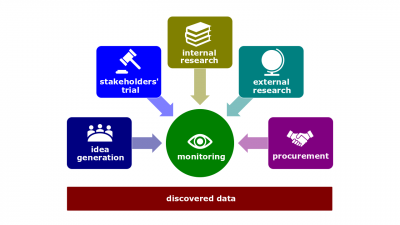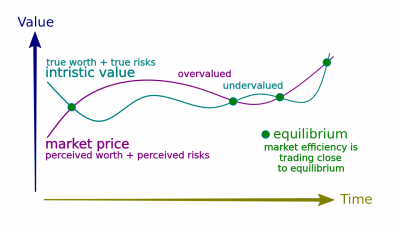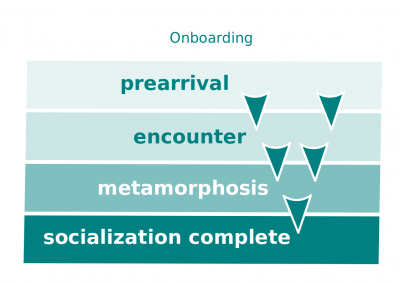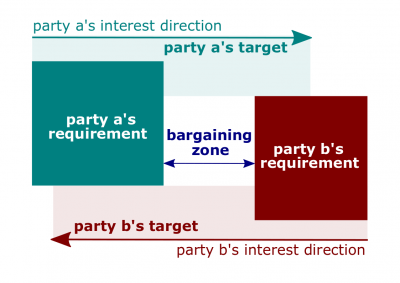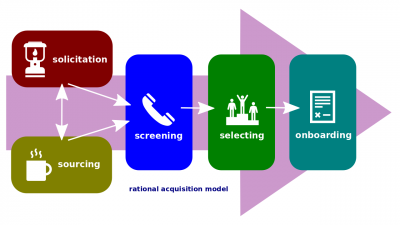Market Intercourses Quarter
Market Intercourses Quarter (hereinafter, the Quarter) is a lecture introducing the learners to team discovery primarily through key topics related to market intercourses. The Quarter is the first of four lectures of Team Quadrivium, which is the sixth of seven modules of Septem Artes Administrativi (hereinafter, the Course). The Course is designed to introduce the learners to general concepts in business administration, management, and organizational behavior.
Contents
Outline
Relationship Management Quarter is the predecessor lecture. In the enterprise discovery series, the previous lecture is Communication Quarter.
- Team discovery is enterprise discovery conducted by workgroups. Organizationally, the workgroups collect their data through idea generation, validated learning, monitoring, and market intercourses. This particular lecture concentrates on market intercourses because other lectures cover other methods.
Concepts
- Market intercourse. The enterprise efforts of engaging or being engaged with the market.
- Enterprise resource. An organization's asset -- including financial, physical, human, intangible, and structural/cultural -- that is used to develop, manufacture, and deliver products to its customers.
- Ranking. Qualitative or quantitative determinations of prospective supplier's capabilities and qualifications in order to select one or more sources to provide proposed material/ services.
- Market. A medium in which buyers and sellers of a specific market exchangeable interact in order to facilitate an exchange. On the market, buyers and sellers (a) search for each other, (b) negotiate prices, and/or (c) make deals.
- Job market. Some market in which employers would like to exchange their employee compensations to one's willingness to perform employer's jobs and employment candidates would like to exchange their willingness to perform employer's jobs to employer's compensation.
- Market research. The activity of gathering information about both or either consumers' needs and preferences and/or sellers' market exchangeables on the market. Sometimes, the research is considered being the first phase of the market analysis.
- Environmental scanning. Screening information to detect emerging trends.
- Target acquisition. In the military, the detection, identification, and location of a target in sufficient detail to permit the effective employment of lethal and non-lethal means. In enterprise administration, assigning a target such as a competitor or rival product with a type of surveillance. This term, target acquisition, can also be used for a broad area of other applications.
- Benchmarking. Enterprise effort that consists of at least two waves: (1) the search for the best practices among competitors or non-competitors that lead to their superior performance; (2) a comparison of a process or system's cost, time, quality, or other metrics to those of leading peer organizations to identify opportunities for improvement.
- Benchmark. The standard of excellence against which an enterprise measures their current success. An investor measures a company's growth by determining whether or not they have met certain benchmarks. For example, company A has met the benchmark of having X amount of recurring revenue after 2 years in the market.
- Comparative analysis. Performing a feature by feature comparison of two or more market exchangeables to determine trends or patterns.
- Procurement. The action of obtaining or procuring something.
- Source qualification. A review of the experience, past performance, capabilities, resources and current work loads of the potential sources.
- Source valuation. Overall review of capabilities and ranking of potential sources either to request for proposals or to enter into negotiations for the award of the contract.
- Potential source. A prospective supplier.
- Sole source. Only one source which could fulfill the requirements of the procurement.
- Selection criteria.
- Cost saving, both short-term and long term such as full cost of ownership;
- Delivery time frame;
- Time to integrate into existing technology;
- Maturity of the solution and ecosystem around it;
- Security of the solution;
- Time to train users.
- Work authorization (or work release). In case where work is to be performed in segments due to technical or funding limitations, work authorization/release authorizes specified work to be performed during a specified period.
- Bid protest. The process by which an unsuccessful supplier may seek remedy for unjust awards.
- Non-conformance. A deficiency in characteristics, documentation or procedure that renders the quality of material/service unacceptable or undeterminate.
- Dispute. Disagreements not settled by mutual consent which could be decided by litigation.
- Work resource. A thing within an individual's control that can be used to solve work demands.
- Work demand. A responsibility, pressure, obligation, and even uncertainty that individuals face in the workplace.
- Human resource. Someone from the personnel of an enterprise, especially when regarded as a significant asset.
- Credential. A qualification, achievement, personal quality, or aspect of a person's background, typically when used to indicate that they are suitable for something.
- Staff acquisition. Getting needed human resources assigned to and working on the project.
- Decruitment. Reducing an organization's workforce.
- Downsizing. The planned elimination of jobs in an organization.
- Recruitment. Locating, identifying, and attracting capable applicants.
- Global sourcing. Purchasing materials and labor from around the world wherever it is cheapest.
- New employee orientation. Introducing a new employee to her or his job and the organization.
- Onboarding. The process and/or the learning sequence that depicts that process of either (a) integrating a new employee into an organization including helping this employee to adapt to the organization's culture (this process is more specifically known as organizational socialization, socialization process, or, simply, socialization) or (b) familiarizing a new customer or client with one's products or services.
- Prearrival stage. The period of learning in the socialization process that occurs before a new employee joins the organization.
- Encounter stage. The stage in the socialization process in which a new employee sees what the organization is really like and confronts the possibility that expectations and reality may diverge.
- Metamorphosis stage. The stage in the socialization process in which a new employee changes and adjusts to the job, work group, and organization.
- Financial resource. Monetary assets currently available for use. Entrepreneurs raise capital to start a company and continue raising capital to grow the company.
- Round. Startups raise capital from VC firms in individual rounds, depending on the stage of the company. The first round is usually a Seed round followed by Series A, B, and C rounds if necessary. In rare cases rounds can go as far as Series F, as was the case with Box.net.
- Seed. The seed round is the first official round of financing for a startup. At this point a company is usually raising funds for proof of concept and/or to build out a prototype and is referred to as a "seed stage" company.
- Series. Refers to the specific round of financing a company is raising. For example, company X is raising their Series A round.
- Corporate acquisition. When one company buys controlling stake in another company. Can be friendly (agreed upon) or hostile (no agreement).
- Negotiation. (1) discussion aimed at reaching an agreement; (2) A process in which two or more parties exchange goods or services and attempt to agree on the exchange rate for them.
- Fixed pie. The belief that there is only a set amount of goods and services to be divided up between the parties.
- BATNA. The best alternative to a negotiated agreement; the least the individual should accept.
- Zero-sum approach. An approach that treats the reward "pie" as fixed, such as that any gains by one individual are at the expense of another.
- Trade-off. Losing one quality or aspect of something in return for gaining another quality or aspect.
- Bargaining.
Bargaining characteristic Distributive bargaining Integrative bargaining Goal Get as much of the fixed pie as possible Expand the pie so that both parties are satisfied Intention Win-lose Win-win Focus Positions such as I can't go beyond this point on this issue Interests such as Can you explain why this issue is so important to you? Interests Opposed Congruent Information sharing Low since sharing information will only allow other party to take advantage High since sharing information will allow each party to find ways to satisfy interests of each party Duration of relationship Short term Long term - Distributive bargaining. Negotiation that seeks to divide up a fixed amount of resources; a win-lose situation.
- Integrative bargaining. Negotiation that seeks one or more settlements that can create a win-win solution.
Roles
- Buyer. Anyone who makes a purchase.
- Seller (or supplier, contractor, provider). A stakeholder who provides organizational resources.
- Employment candidate. An individual who applies for a job.
- Third party. An individual or group besides the two "parties" primarily involved in a situation, especially a dispute.
- Arbitrator. A third party to a negotiation who has the authority to dictate an agreement.
- Conciliator. A trusted third party who provides an informal communication link between the negotiator and the opponent.
- Mediator. A neutral third party who facilitates a negotiated solution by using reasoning, persuasion, and suggestions for alternatives.
- Independent contractor (or 1099-form worker). An individual or another legal entity that provides goods or services to another entity under terms specified in a contract or within a verbal agreement. Unlike an employee, an independent contractor does not work regularly for an employer, but works as and when required, during which time he or she may be subject to law of agency. Independent contractors are usually paid on a freelance basis. Contractors often work through a limited company or franchise, which they themselves own, or may work through an umbrella organization.
- Data broker. A business that collects personal information about consumers and sells that information to other organizations.
- Recruiter. A legal entity whose business is to enlist or enroll people as employees, students, or as members of an organization.
- Retained recruiter. A recruiter who is paid for the time spent while recruiting regardless of the fact whether qualified sources are identified, hired, or not.
- Contingency recruiter. A recruiter who is paid only when qualified sources are identified and hired.
- Talent director. Audition and interview performers to select most appropriate talent for parts in stage, television, radio, or motion picture productions.
Methods
- Competence assessment. Testing in which a testee is a human being and his or her competence is the subject of testing. Exams and quizzes are regularly used to test knowledge and decision-making skills. The assessment commonly includes academic testing and screening job applicants to ensure that the most appropriate candidates are hired.
- Panel interview. A structured interview conducted with a candidate and a number of panel members in a joint meeting.
- Realistic job preview. A substantive selection test that is a job tryout to assess talent versus experience. On the other side, this preview provides both positive and negative information about the job and the employer.
- Critical incident. A way of evaluating the behaviors that are key in making the difference between executing a job effectively and executing it ineffectively.
- Behaviorally anchored rating scale. A scale that combine major elements from the critical incident and graphic rating scale approaches. The appraiser rates the employees based on items along a continuum, but the points are examples of actual behavior on the given job rather than general descriptions or traits.
- Job interview. An interview consisting of a conversation between a job applicant and one or more representatives of an employer which is conducted to assess whether the applicant should be hired and, possibly, negotiate conditions of this hiring.
- Meeting. An occasional or arranged gathering of people for informational, emotional, or physical exchanges; particularly, this gathering can serve as a data-gathering technique.
- Town hall meeting. An informal public meeting where information can be relayed, issues can be discussed, or employees can be brought together to celebrate accomplishments.
- Pre-bid meeting (bidder conference). A meeting between the buyer and sellers before the submission of proposals or bids. The conference is a part of the process of selecting vendors that can provide the services and goods to a particular project.
- Preaward meeting. A meeting to aid ranking of prospective suppliers before final award determination and to examine their facilities or capabilities.
- Postaward meeting.
- Vendor conference (contractor conference).
- Source consideration. A careful thought, typically over a period of time, of one or more sources as of potential providers.
- Macro environment. Consideration, interrelationship and action of outside changes such as legal, social, economic, political or technological which may directly or indirectly influence specific procurement actions.
- Micro environment. Consideration of firm, project or client imposed policies and procedures applicable in the procurement actions.
- Debriefing. A process of: (1) receiving an explanation such as preaward or postaward debrifing, (2) receiving information and situation-based reminders of context, (3) reporting of measures of performance, and/or opportunities to further investigate the results of a study, investigation, or assessment of performance after participation in an immersive activity is complete.
Instruments
- Solicitation request. An act of asking formally for solicitation.
- Request for information (RFI). A requirements document issued to solicit vendor input on a proposed process or product. An RFI is used when the issuing organization seeks to compare different alternatives or is uncertain regarding the available options
- Request for proposal (RFP). A requirements document issued when an organization is seeking a formal proposal from vendors. An RFP typically requires that the proposals be submitted following a specific process and using sealed bids which will be evaluated against a formal evaluation methodology. In other words, RFP is a formal invitation containing a scope of work which seeks a formal response (proposal) describing both methodology and compensation to form the basis of a contract.
- Request for quote (RFQ). An informal solicitation of proposals from vendors.
- Request for quotation. A formal invitation to submit a price for goods and/or services as specified.
- KSA (or knowledge, skills, and abilities). A series of narrative statements that are particularly required when applying to United States Federal Government job openings. KSAs are used to determine, along with résumés, who the best applicants are when several candidates qualify for a job.
- Job description. A written statement that describes a job.
- Job specification. A written statement of the minimum qualifications a person must possess to perform a given job successfully.
- Personal data acquisition. Acquisition of personal data usually of current and/or potential stakeholders.
- Biometrics acquisition. Acquisition of biological data usually of employment candidates and employees.
- Drug test. A technical analysis of a biological specimen, for example urine, hair, blood, breath, sweat, and/or oral fluid/saliva undertaken in order to determine the presence or absence of specified parent drugs or their metabolites.
- Credential verification. Verification of identification documents and/or other credentials.
- Competence assessment tool. A tangible and/or software implement used to screen employment candidates to ensure that the most appropriate candidates are hired and/or employees to update KSA register.
- Situational judgment test. A substantive selection test that asks applicants how they would perform in a variety of job situations; the answers are then compared to the answers of high-performing employees.
- Work sample test. A hands-on simulation of part or all of the work that applicants for routine jobs must perform.
- Assessment center. An off-site place where candidates are given a set of performance simulation tests designed to evaluate their managerial potential.
- Contract administration. Managing the relationship with the seller.
- Employment contract. A written or oral agreement documenting the shared rights and responsibilities between an employer and an employee when the worker is hired as a W-2 employee. Independent contractors (or 1099-form workers), when they are qualified properly, are not employees.
- Non-disclosure agreement (NDA). An agreement between two parties to protect sensitive or confidential information, such as trade secrets, from being shared with outside parties.
- Contract award. The final outcome of acquisition process in which generally the contract is awarded to one prospective supplier. Both the parties sign a legally binding contract formalizing the statement of work (SOW), terms and conditions, form of contract, pricing and measures of performance.
- Contract closeout. Completion and settlement of the contract, including resolution of any open items.
- Fixed-price contract. The contract that establishes a fixed total price for a well-defined deliverable. Since both the price and the product scope are well-defined, the buyer's risks are usually relatively low. Fixed-price contracts may also include incentives for meeting or exceeding selected project objectives, such as schedule targets. In most cases, this type of contract is considered to be favorable for the buyer.
- Firm-fixed-price contract (FFP contract). A lump sum contract in which the seller agrees to provide the buyer with a deliverable at a fixed amount (as defined by the contract), regardless of the seller's costs.
- Fixed-price-plus-incentive-fee contract (FPPIF contract). A contract in which the buyer pays the seller a set amount (as defined by the contract), and the seller can earn an additional amount if the seller meets defined performance criteria.
- Cost-reimbursable contract. The contract that establishes reimbursements (in simple words, payments) to the seller for its actual costs. These costs are usually classified as direct costs (costs incurred directly by the project, such as wages for members of the project team) and indirect costs (costs allocated to the project by the performing organization as a cost of doing business, such as salaries for corporate executives). Indirect costs are usually calculated as a percentage of direct costs. Cost-reimbursable contracts often include incentives for meeting or exceeding selected project objectives, such as schedule targets or total cost. Since the product scope is not well-defined, the buyer's risks are usually relatively high. In most cases, this type of contract is considered to be favorable for the seller.
- Cost-plus-percentage-of-cost contract (CPPC contract). A contract in which the buyer reimburses the seller for the seller's allowable costs (allowable costs are defined by the contract) plus an agreed upon percentage of the estimated cost as profit.
- Cost-plus-fixed-fee contract (CPFF contract). A contract in which the buyer reimburses the seller for the seller's allowable costs (allowable costs are defined by the contract) plus a fixed amount of profit (fee), which is paid proportionately as the contract progresses. In other words, the buyer provides the seller for cost of delivered performance along with a predetermined fee as a bonus.
- Cost-plus-incentive-fee contract (CPIF contract). A contract in which the buyer reimburses the seller for the seller's allowable costs (allowable costs are defined by the contract) plus an additional amount if the seller meets some performance criteria defined in the contract.
- Time and material contract (T&M). The contract that includes payments for both time and material reimbursement. A time and material contract resembles a fixed-price contract because the price for time is fixed. Thus, the parties should agree on the rates for different categories of staffers. However, since the amount of time is not defined, a time and material contract resembles a cost-reimbursable contract as well. Similarly to cost-reimbursable contracts, time and material contracts are open ended, their full values are not defined at the time of the award, and, therefore, these contracts can grow in contract value. Time and material contracts are often used for employment arrangements and staff augmentation.
- Authorization document.
- Employment offer. A text document that offers employment to an employment candidate.
- Notice to proceed. Formal request to start the work.
- Stop work order. Request for interim stoppage of work due to nonconformance, or funding or technical limitations.
- Rational Acquisition Model. A model that describes how enterprises may rationally behave in order to carry out best source valuation and maximize the outcomes from their acquisitions.
- Source solicitation. Enterprise efforts undertaken in order to obtain information about possible sources and, possibly, their quotations, bids, offers, or proposals as appropriate.
- Sourcing. Enterprise efforts undertaken in order to identify and list possible sources, internal and/or external, that are potentially capable to provide the specified organizational resources, as well as potential data sources who are able to provide relevant information on specific procurement.
- Source screening. (1) The evaluation or investigation of a source as part of a methodical survey, to assess suitability for a particular role or purpose; (2) techniques used for source consideration, reviewing, analyzing, ranking, and selecting the best alternatives for the proposed action.
- Source settlement. An official agreement between an enterprise and its selected source intended to settle the acquisition.
- Source selection. The process of selected sources whose resources, credibility and performance is expected to meet the contract/procurement objectives within a competitive range of cost.
- Initial selection. From all possible sources, identifying those that meet basic qualifications.
- Substantive selection. From those sources that meet basic qualifications, determining the most qualified.
- Contingent selection. Making final checks before making offers to the selected source.
- Negotiation process model.
Group development Negotiation process model Forming Preparation and planning Storming Norming Definitions of ground rules Clarification and justification Performing Bargaining and/or problem solving Closure and implementation - Sop. A thing given or done as a concession of no great value to appease someone whose main concerns or demands are not being met.
Results
Practices
Regulatory Сompliance Quarter is the successor lecture. In the enterprise discovery series, the next lecture is Bookkeeping Quarter.
